Diversity in literature goes beyond ethnicity. Diversity may include the various facets of sexuality and gender, cultural, and societal groups. Whether characters in the books we read reflect others or ourselves, what is most important is connecting with them in ways that help us understand who we are today. Sometimes learning about our history through the eyes of diverse characters can be unsettling or even painful, but it also can be an awakening to the unknown. In this collection, I focus on books that reflect multiple cultures in the text or illustrations, sometimes subtle, other times more direct. I believe these books reflect the mosaic beauty of our world.
Ages 4–8
Ada Twist, Scientist. Andrea Beaty. Ill. David Roberts. 2016. Abrams.
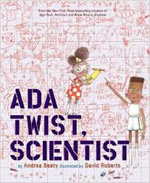 Ada has been an inquisitive child from the time she could crawl. At first, her insatiable curiosity, constant questions, and taking things apart to see how they work frustrate her parents, but soon they nurture Ada’s quest for answers instead. As her search for knowledge flourishes, Ada also realizes she might encourage other kindred budding scientists by taking her latest experiment to her classroom. Features reflecting diversity in the rhyming text and expressive mixed-media illustrations include the race of this young girl scientist and the racial makeup of her classroom.
Ada has been an inquisitive child from the time she could crawl. At first, her insatiable curiosity, constant questions, and taking things apart to see how they work frustrate her parents, but soon they nurture Ada’s quest for answers instead. As her search for knowledge flourishes, Ada also realizes she might encourage other kindred budding scientists by taking her latest experiment to her classroom. Features reflecting diversity in the rhyming text and expressive mixed-media illustrations include the race of this young girl scientist and the racial makeup of her classroom.
The Airport Book. Lisa Brown. 2016. Neal Porter/Roaring Book.
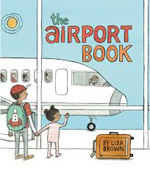 If you need a book to explain airports to children (or adults) who are new to flying this book is perfect because of the range of perspectives Lisa Brown captures through her detailed ink-and-watercolor illustrations, narrative text, and cartoon bubble conversations. Clearly Brown has spent some time coming from, going to, and being in airports. Her depiction of the variety of people (including the featured biracial family going on a trip), movement, sounds, conversations, vendors, crying babies, limited seat space, and more at the airport are impeccable. Her sense of humor comes through in some unexpected details. Look closely!
If you need a book to explain airports to children (or adults) who are new to flying this book is perfect because of the range of perspectives Lisa Brown captures through her detailed ink-and-watercolor illustrations, narrative text, and cartoon bubble conversations. Clearly Brown has spent some time coming from, going to, and being in airports. Her depiction of the variety of people (including the featured biracial family going on a trip), movement, sounds, conversations, vendors, crying babies, limited seat space, and more at the airport are impeccable. Her sense of humor comes through in some unexpected details. Look closely!
Emma and Julia Love Ballet. Barbara McClintock. 2016. Scholastic.
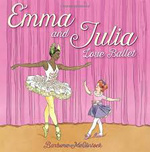 This delightful picture book describes the life of two people who love ballet: Emma, a beginner, and Julia, a professional. Similarities between these two characters’ daily routines and lessons, presented in both the text and softly colored illustrations, provide the perfect staging for the relationship that unfolds at the end of the story. Emma gets to meet Julia backstage, and their encounter is heartwarming. This book is a nice reflection of how two different, yet similar, people come together naturally. A good companion book is Allegra Kent’s Ballerina Gets Ready (2016), which also features an African American dancer.
This delightful picture book describes the life of two people who love ballet: Emma, a beginner, and Julia, a professional. Similarities between these two characters’ daily routines and lessons, presented in both the text and softly colored illustrations, provide the perfect staging for the relationship that unfolds at the end of the story. Emma gets to meet Julia backstage, and their encounter is heartwarming. This book is a nice reflection of how two different, yet similar, people come together naturally. A good companion book is Allegra Kent’s Ballerina Gets Ready (2016), which also features an African American dancer.
A Piece of Home. Jeri Watts. Ill. Hyewon Yum. 2016. Candlewick.
 This insightful and realistic story is told through the eyes of Hee Jun, a recent arrival in America from South Korea. Hee Jun, his family, and his grandmother left behind their home and friends. Everything looks, sounds, and feels different in their new surroundings, and everyone is having a difficult time adjusting to living in West Virginia. Things begin to look up when his grandmother visits his sister’s kindergarten class to help her transition and he meets a friend. In his new friend’s yard, Hee Jun is surprised to find mugunghwa (the Korean national flower that is called Rose of Sharon in the United States). For Hee Jun and his grandmother, the flower is “a piece of home,” a remembrance of Korea.
This insightful and realistic story is told through the eyes of Hee Jun, a recent arrival in America from South Korea. Hee Jun, his family, and his grandmother left behind their home and friends. Everything looks, sounds, and feels different in their new surroundings, and everyone is having a difficult time adjusting to living in West Virginia. Things begin to look up when his grandmother visits his sister’s kindergarten class to help her transition and he meets a friend. In his new friend’s yard, Hee Jun is surprised to find mugunghwa (the Korean national flower that is called Rose of Sharon in the United States). For Hee Jun and his grandmother, the flower is “a piece of home,” a remembrance of Korea.
Who We Are!: All About Being the Same and Being Different (Let’s Talk About You and Me series). Robie H. Harris. Ill. Nadine Bernard Westcott. 2016. Candlewick.
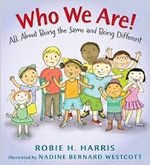 Similarities and differences are real among the people in our world. This fifth book in the Let’s Talk About You and Me series captures the beauty of diversity within a family and in the broader world. Everything from physical appearance to likes and dislikes, with an emphasis on the importance of accepting—and celebrating—who you are, is clearly presented in the narrative text and cartoon illustrations. A charming companion book is Mixed Me! (2015)by Taye Diggs, a story about a young boy in a biracial family.
Similarities and differences are real among the people in our world. This fifth book in the Let’s Talk About You and Me series captures the beauty of diversity within a family and in the broader world. Everything from physical appearance to likes and dislikes, with an emphasis on the importance of accepting—and celebrating—who you are, is clearly presented in the narrative text and cartoon illustrations. A charming companion book is Mixed Me! (2015)by Taye Diggs, a story about a young boy in a biracial family.
Ages 9–11
Children Just Like Me: A New Celebration of Children Around the World. DK. 2016. DK/Penguin Random House.
 Following the same engaging format as the original Children Just Like Me, which was published in 1995, this new edition is an engaging visual celebration of children around the world. Each of the six sections (North America, South America, Europe, Africa, Asia and Southeast Asia, and Australia) features an abundance of captioned photographs, carefully selected images of children, diverse families, world religions, homes, food, hobbies, and interesting facts, which will hold readers’ attention for hours. A cool activity would be to compare the original version with this new book. How have things changed?
Following the same engaging format as the original Children Just Like Me, which was published in 1995, this new edition is an engaging visual celebration of children around the world. Each of the six sections (North America, South America, Europe, Africa, Asia and Southeast Asia, and Australia) features an abundance of captioned photographs, carefully selected images of children, diverse families, world religions, homes, food, hobbies, and interesting facts, which will hold readers’ attention for hours. A cool activity would be to compare the original version with this new book. How have things changed?
Elizabeth Started All the Trouble. Doreen Rappaport. Ill. Matt Faulkner. 2016. Disney/Hyperion.
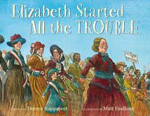 Spunk and determination abound in this delightful picture book about the women’s suffrage movement. Although Abigail Adams pressed her husband, John Adams, to make sure the Founding Fathers included women in the Declaration of Independence, women were not mentioned. However, the fight for women’s rights did not end. Years later, in 1848, Elizabeth Cady Stanton took up the cause for women’s right to vote. Her movement gained a large following of women across the United States. Wyoming became the first state to give women the right to vote in 1869, but it was not until 1920 that women across the nation were allowed to vote. Readers will meet many of the key players throughout history that helped the passage of the 19th Amendment to the Constitution, which granted women the right to vote. This is a timely book, with the Democratic Party being the first major political party to nominate a woman for president.
Spunk and determination abound in this delightful picture book about the women’s suffrage movement. Although Abigail Adams pressed her husband, John Adams, to make sure the Founding Fathers included women in the Declaration of Independence, women were not mentioned. However, the fight for women’s rights did not end. Years later, in 1848, Elizabeth Cady Stanton took up the cause for women’s right to vote. Her movement gained a large following of women across the United States. Wyoming became the first state to give women the right to vote in 1869, but it was not until 1920 that women across the nation were allowed to vote. Readers will meet many of the key players throughout history that helped the passage of the 19th Amendment to the Constitution, which granted women the right to vote. This is a timely book, with the Democratic Party being the first major political party to nominate a woman for president.
Miss Mary Reporting: The True Story of Sportswriter Mary Garber. Sue Macy. Ill. C.F. Payne. 2016. Simon & Schuster.
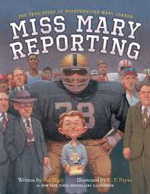 Determination, patience, and diligence paid off for Mary Garber, who crossed the gender barrier to become the first and longest working female sports writer in U.S. history. She gained her reputation from writing truthfully about the exceptional ability of Jackie Robinson, the first African American major league baseball player. Her sports writing career spanned more than 50 years. Mary Garber was inducted into the Hall of Fame of the National Sportscaster and Sportswriters Association in 2008, just months before she died at age 92.
Determination, patience, and diligence paid off for Mary Garber, who crossed the gender barrier to become the first and longest working female sports writer in U.S. history. She gained her reputation from writing truthfully about the exceptional ability of Jackie Robinson, the first African American major league baseball player. Her sports writing career spanned more than 50 years. Mary Garber was inducted into the Hall of Fame of the National Sportscaster and Sportswriters Association in 2008, just months before she died at age 92.
What Is a Veteran, Anyway? Robert C. Snyder. Ill. Ron Himler. 2016. Blue Marlin.
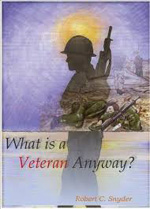 Given the ongoing occurrence of veteran-related news, the timing of this book is perfect. Robert C. Snyder, a veteran, does a good job of capturing the crux of what it meant to be a veteran in the past and what it means today in a factual, yet gentle, tone. Through expressive watercolor illustrations and accessible text, this book provides a good overview of veterans in the United States, those who served in the military and have returned to civilian life, as well as mentioning those who made the ultimate sacrifice.
Given the ongoing occurrence of veteran-related news, the timing of this book is perfect. Robert C. Snyder, a veteran, does a good job of capturing the crux of what it meant to be a veteran in the past and what it means today in a factual, yet gentle, tone. Through expressive watercolor illustrations and accessible text, this book provides a good overview of veterans in the United States, those who served in the military and have returned to civilian life, as well as mentioning those who made the ultimate sacrifice.
Ages 12–14
I, Humanity. Jeffrey Bennett. 2016. Big Kid Science.
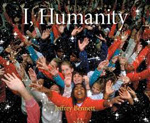 Imagine traveling to or even living in space someday. Already, more than 200 astronauts from more than a dozen nations, cultures, and religions have visited the International Space Station. With a narrator who represents humanity throughout history, this intriguing nonfiction book presents a chronological survey of what humans have believed and learned about the universe. Reading this book will likely leave readers with an increased curiosity about the future of space exploration. With recent emphasis on science and math in schools, this book has many applications, including aviation, space exploration, astronomy, astrophysics, women in science, and more. This book is also available in a Spanish edition, Yo Soy la Humanidad (2016).
Imagine traveling to or even living in space someday. Already, more than 200 astronauts from more than a dozen nations, cultures, and religions have visited the International Space Station. With a narrator who represents humanity throughout history, this intriguing nonfiction book presents a chronological survey of what humans have believed and learned about the universe. Reading this book will likely leave readers with an increased curiosity about the future of space exploration. With recent emphasis on science and math in schools, this book has many applications, including aviation, space exploration, astronomy, astrophysics, women in science, and more. This book is also available in a Spanish edition, Yo Soy la Humanidad (2016).
The Inquisitor’s Tale: Or, The Three Magical Children and Their Holy Dog. Adam Gidwitz. Ill. Hatem Aly. 2016. Dutton/Penguin.
 In this page-turning mystery and humorous tale, Gidwitz remarkably threads medieval history through stories within a story. Unfortunate circumstances and perceived unnatural powers bring an unlikely group of children and a dog together. King Louis IX issues a death warrant, as it is rumored these children may possess supernatural powers considered blasphemous by the church and state. Jeanne, whose life was saved by Gwenforte, the dog, has seizures and sees into the future. William, a well-read, dark-skinned oblate, has Hulk-like strength. Jacob was forced to leave his Jewish community when a group of anti-Semitic teens sets fire to homes. Gidwitz gives readers much to think about in the parallels implied through the racial bigotry and persecution of the past compared with the present.
In this page-turning mystery and humorous tale, Gidwitz remarkably threads medieval history through stories within a story. Unfortunate circumstances and perceived unnatural powers bring an unlikely group of children and a dog together. King Louis IX issues a death warrant, as it is rumored these children may possess supernatural powers considered blasphemous by the church and state. Jeanne, whose life was saved by Gwenforte, the dog, has seizures and sees into the future. William, a well-read, dark-skinned oblate, has Hulk-like strength. Jacob was forced to leave his Jewish community when a group of anti-Semitic teens sets fire to homes. Gidwitz gives readers much to think about in the parallels implied through the racial bigotry and persecution of the past compared with the present.
Women Who Changed the World: 50 Amazing Americans. Laurie Calkhoven. Ill. Patricia Castelao. 2016. Scholastic.
 Our world has been changed for the better by women. However, most of the time their accomplishments and contributions have been slighted in the history books. This carefully selected and diverse collection of women who paved the way, including such figures as Pocahontas, Sojourner Truth, Elizabeth Cady Stanton, Beyoncé, and Hillary Clinton, would be a good addition to libraries and classrooms. Fifty one-page biographies of American women, arranged chronologically, include facts, family status, and major accomplishments that have made an impact on the world. A portrait and an illustration highlight the entry for each woman. An additional sixteen women are listed along with a glossary at the end of the book.
Our world has been changed for the better by women. However, most of the time their accomplishments and contributions have been slighted in the history books. This carefully selected and diverse collection of women who paved the way, including such figures as Pocahontas, Sojourner Truth, Elizabeth Cady Stanton, Beyoncé, and Hillary Clinton, would be a good addition to libraries and classrooms. Fifty one-page biographies of American women, arranged chronologically, include facts, family status, and major accomplishments that have made an impact on the world. A portrait and an illustration highlight the entry for each woman. An additional sixteen women are listed along with a glossary at the end of the book.
Ages 15+
Pride: Celebrating Diversity & Community. Robin Stevenson. 2016. Orca.
 With recent Supreme Court decisions on gay and lesbian rights, this book is a fitting addition to libraries. Historical background and global perspective serve as an awakening to the growing number of voices that were silenced in the past but are now a unified call for equality. Photographs of smiling participants and bystanders flourish in this perceptive nonfiction book, reflecting Pride activism around the world. The book is organized in four sections: The History of Pride, Pride and Identity, Celebrating Pride Today, and Activism Around the World. Back matter includes a glossary, references, resources, and an index.
With recent Supreme Court decisions on gay and lesbian rights, this book is a fitting addition to libraries. Historical background and global perspective serve as an awakening to the growing number of voices that were silenced in the past but are now a unified call for equality. Photographs of smiling participants and bystanders flourish in this perceptive nonfiction book, reflecting Pride activism around the world. The book is organized in four sections: The History of Pride, Pride and Identity, Celebrating Pride Today, and Activism Around the World. Back matter includes a glossary, references, resources, and an index.
Stan Steiner teaches Children’s/Young Adult Literature at Boise State University. He has had a long relationship with bringing awareness to multicultural literature through his teaching and publications.
These reviews are submitted by members of the International Literacy Association's Children's Literature and Reading Special Interest Group (CL/R SIG) and are published weekly on Literacy Daily.